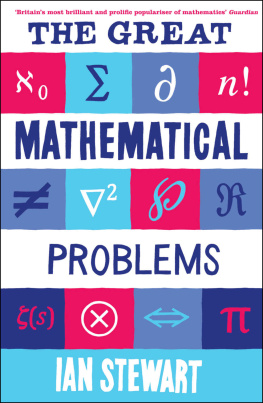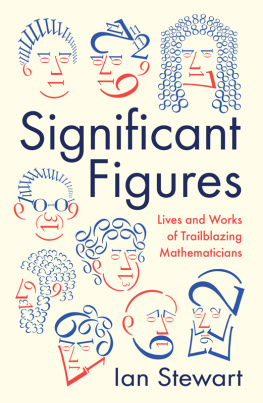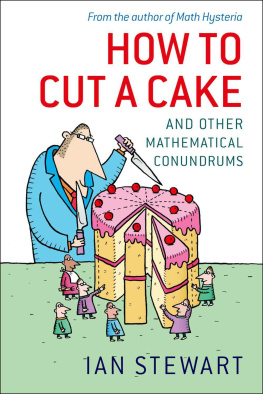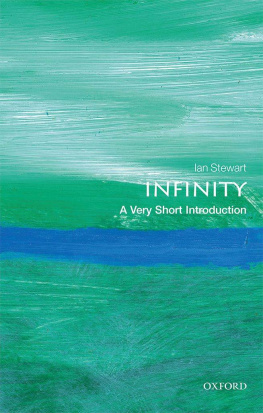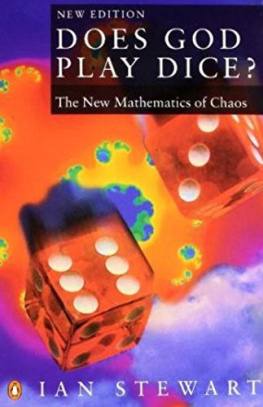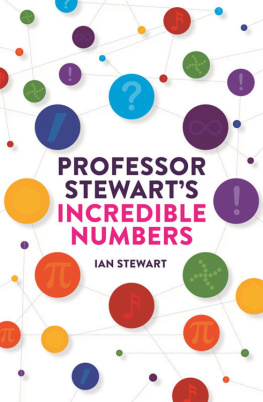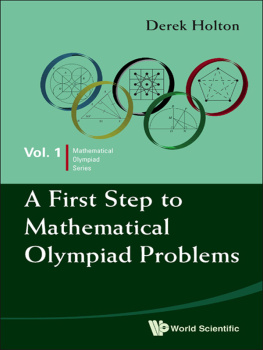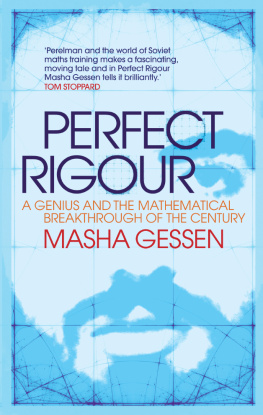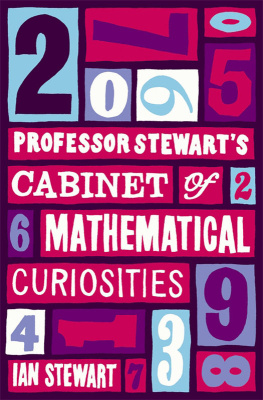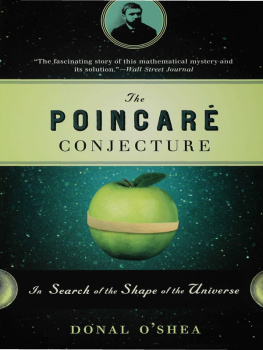THE GREAT MATHEMATICAL PROBLEMS
By the same author
Concepts of Modern Mathematics
Game, Set, and Math
The Problems of Mathematics
Does God Play Dice?
Another Fine Math Youve Got Me Into
Fearful Symmetry (with Martin Golubitsky)
Natures Numbers
From Here to Infinity
The Magical Maze
Lifes Other Secret
Flatterland
What Shape Is a Snowflake?
The Annotated Flatland
Math Hysteria
The Mayor of Uglyvilles Dilemma
Letters to a Young Mathematician
Why Beauty Is Truth
How to Cut a Cake
Taming the Infinite/The Story of Mathematics
Professor Stewarts Cabinet of Mathematical Curiosities
Professor Stewarts Hoard of Mathematical Treasures
Cows in the Maze
Mathematics of Life
Seventeen Equations That Changed the World/In Pursuit of the Unknown
Jack Of All Trades (science fiction eBook)
with Terry Pratchett and Jack Cohen
The Science of Discworld
The Science of Discworld II: The Globe
The Science of Discworld III: Darwins Watch
with Jack Cohen
The Collapse of Chaos
Figments of Reality
Evolving the Alien/What Does a Martian Look Like?
Wheelers (science fiction)
Heaven (science fiction)
THE GREAT MATHEMATICAL PROBLEMS
Marvels and Mysteries of Mathematics
IAN STEWART

First published in Great Britain in 2013 by
PROFILE BOOKS LTD
3A Exmouth House
Pine Street
London EC1R 0JH
www.profilebooks.com
Copyright Joat Enterprises, 2013
1 3 5 7 9 10 8 6 4 2
Printed and bound in Great Britain by Clays, Bungay, Suffolk
The moral right of the author has been asserted.
All rights reserved. Without limiting the rights under copyright reserved
above, no part of this publication may be reproduced, stored or
introduced into a retrieval system, or transmitted, in any form or by any
means (electronic, mechanical, photocopying, recording or otherwise),
without the prior written permission of both the copyright owner and the
publisher of this book.
A CIP catalogue record for this book is available from the British Library.
ISBN 978 1 84668 1998
eISBN 978 184765 3512

The paper this book is printed on is certified by the 1996 Forest
Stewardship Council A.C. (FSC). It is ancient-forest friendly. The printer
holds FSC chain of custody SGS-COC-2061
Contents
We must know. We shall know.
David Hilbert
Speech about mathematical problems in 1930, on the occasion of his honorary citizenship of Knigsberg.
Preface
Mathematics is a vast, ever-growing, ever-changing subject. Among the innumerable questions that mathematicians ask, and mostly answer, some stand out from the rest: prominent peaks that tower over the lowly foothills. These are the really big questions, the difficult and challenging problems that any mathematician would give his or her right arm to solve. Some remained unanswered for decades, some for centuries, a few for millennia. Some have yet to be conquered. Fermats last theorem was an enigma for 350 years until Andrew Wiles dispatched it after seven years of toil. The Poincar conjecture stayed open for over a century until it was solved by the eccentric genius Grigori Perelman, who declined all academic honours and a million-dollar prize for his work. The Riemann hypothesis continues to baffle the worlds mathematicians, impenetrable as ever after 150 years.
The Great Mathematical Problems contains a selection of the really big questions that have driven the mathematical enterprise in radically new directions. It describes their origins, explains why they are important, and places them in the context of mathematics and science as a whole. It includes both solved and unsolved problems, which range over more than two thousand years of mathematical development, but its main focus is on questions that either remain open today, or have been solved within the past fifty years.
A basic aim of mathematics is to uncover the underlying simplicity of apparently complicated questions. This may not always be apparent, however, because the mathematicians conception of simple relies on many technical and difficult concepts. An important feature of this book is to emphasise the deep simplicities, and avoid or at the very least explain in straightforward terms the complexities.
Mathematics is newer, and more diverse, than most of us imagine. At a rough estimate, the worlds research mathematicians number about a hundred thousand, and they produce more than two million pages of new mathematics every year. Not new numbers, which are not what the enterprise is really about. Not new sums like existing ones, but bigger though we do work out some pretty big sums. One recent piece of algebra, carried out by a team of some 25 mathematicians, was described as a calculation the size of Manhattan. That wasnt quite true, but it erred on the side of conservatism. The answer was the size of Manhattan; the calculation was a lot bigger. Thats impressive, but what matters is quality, not quantity. The Manhattan-sized calculation qualifies on both counts, because it provides valuable basic information about a symmetry group that seems to be important in quantum physics, and is definitely important in mathematics. Brilliant mathematics can occupy one line, or an encyclopaedia whatever the problem demands.
When we think of mathematics, what springs to mind is endless pages of dense symbols and formulas. However, those two million pages generally contain more words than symbols. The words are there to explain the background to the problem, the flow of the argument, the meaning of the calculations, and how it all fits into the evergrowing edifice of mathematics. As the great Carl Friedrich Gauss remarked around 1800, the essence of mathematics is notions, not notations. Ideas, not symbols. Even so, the usual language for expressing mathematical ideas is symbolic. Many published research papers do contain more symbols than words. Formulas have a precision that words cannot always match.
However, it is often possible to explain the ideas while leaving out most of the symbols. The Great Mathematical Problems takes this as its guiding principle. It illuminates what mathematicians do, how they think, and why their subject is interesting and important. Significantly, it shows how todays mathematicians are rising to the challenges set by their predecessors, as one by one the great enigmas of the past surrender to the powerful techniques of the present, which changes the mathematics and science of the future. Mathematics ranks among humanitys greatest achievements, and its great problems solved and unsolved have guided and stimulated its astonishing power for millennia, both past and yet to come.
Coventry, June 2012
Figure Credits
.
1
Great problems
TELEVISION PROGRAMMES ABOUT MATHEMATICS are rare, good ones rarer. One of the best, in terms of audience involvement and interest as well as content, was Fermats last theorem. The programme was produced by John Lynch for the British Broadcasting Corporations flagship popular science series
Next page
